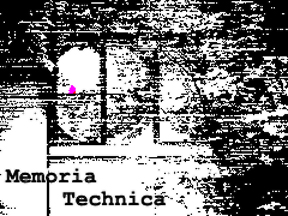|
|
transcendental herbaria December 30, 2001 |
|||||||
|
|
||||||||
|
This Year's Bird
Sightings Today's Reading This Year's Reading |
|
|
Thoreau is not the only one who botanized Concord. So did the Alcotts, so did Thoreau's sister Sophia, Sarah Alden Bradford Ripley, Edward Sherman Hoar (one of Thoreau's walking buddies), Horace Mann, Jr., Minot Pratt (another one of Thoreau's walking buddies), and a host of 19th century contemporaries. Collecting plants for their personal herbaria was a very popular pastime among 19th century Americans. Brothers Charles and Edward Jarvis were two of the earliest collectors in Concord. And more recently Ray Angelo (whose Botanical Index to Thoreau's Journals I relied on for decoding unfamiliar/obsolete plant names while reading the H.G.O. Blake seasonal edition of the journals) botanized Concord at the end of the 20th century - and is probably still botanizing it in the 21st century. So Nancy and I were off to the Concord Museum today not so much as a literary pilgrimage but as a botanical one, to see the special exhibition Wild Flora, which closes on January 6. Well we could have waited 'til the very last minute I suppose... Wild Flora showcases what field biologist and naturalist Erika Sonder calls the Portable Herbarium. Y'know I've mentioned herbaria a gazillion times in my journal and never exactly explained what one is, nor included it in the glossary. So, a brief explanation/definition: a herbarium (plural herbaria) is a collection of pressed, dried, mounted and labeled plant specimens that are kept in systematic order and used by botanical researchers and students. So when I was at the national herbarium in Beijing photographing conifer specimens, I was in a big building where pressed plant specimens are stored in metal cabinets in taxonomic order. Anyway, now back to our story... I was particularly interested in seeing this exhibition because I'd read in the newspaper that Sonder's collection of New England botanical specimens has been preserved using a "new 21st century technique". Since my frustrating (but oh so valuable) experience digitizing the Beijing conifer collection with the Nikon Coolpix I've been wondering if there was a better way to make the herbarium contents more accessible. Turns out what Sonder does is collect and prepare specimens in the normal way - except she obviously doesn't mount them on Japanese newspapers and press them with cardboard cut from boxes and dry them in makeshift plant dryer with a blue tarp ... - and copies them on high resolution color laser copier, sort of the way Mark of M&M does his collages. It's totally cool and much better than my digital photos. I had to look really closely to see that they weren't actual herbarium specimens. You could easily see all the distinguishing features. The specimens/prints were gorgeous. They were art. Other highlights were:
It's no wonder Lygodium palmatum is so rare. Everybody in 19th century Concord was collecting it! Besides Thoreau's specimen, there was one collected by Ripley, and one collected by Bronson Alcott and pressed into a scrapbook. Those, by the way, were all actual specimens not high-tech laser prints. It was a major thrill for me to see a specimen collected and pressed by Thoreau's own hands. I got that electric tingle all over. What's kind of funny is that I didn't get that same feeling about seeing his desk and chair from the cabin at Walden in the museum's regular collection, but I sure got it from Lygodium palmatum. I wasn't ready to leave Concord yet, so we stopped in at the Concord Bookshop in search of more transcendentalists or something. I ended up buying a paperback copy of Jane Langton's The Diamond in the Window and two of its sequels (The Swing in the Summerhouse and The Astonishing Stereoscope). I read The Diamond in the Window when I was 11 years old and it made a huge impression on me. In fact, it may be sort of subconsciously the reason I got so into Thoreau. I tracked down a hardcover copy to give Andrea for Christmas this year and reread it before I wrapped it. I still love it. It takes place in Concord in an old house owned by a scholar of transcendentalism. The house has a magical attic room and Eddy and Eleanor Hall and among other things have an interesting encounter with Henry David Thoreau at Walden Pond while they find out secrets about their family's past. To do it justice would spoil it. So I'll leave it at that. Oh yeah, we saw the furniture from Emerson's study, one of the actual "two if by sea" lanterns from the Old North Church, and a slew of Christmas trees decorated by Concord families illustrating their favorite children's books. Oddly none of the trees had a The Diamond in the Window theme, let alone Walden... |
|||||
|
|
|
Copyright © 2001, Janet I. Egan |
|||||
